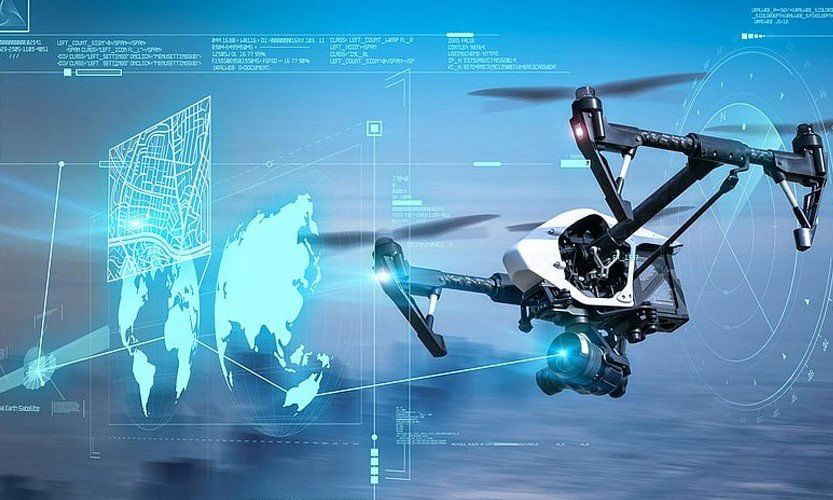

By Julian Nettlefold,
13 Nov 24. The demands on intelligence, surveillance, and reconnaissance (ISR) operations are growing, as today’s complex security environment addresses new requirements to support faster and more efficient operations. Legacy ISR systems have struggled to keep up with the vast amounts of surging data volumes, which often translates into delayed decision-making. As a result valuable — and sometimes vital — insights are lost, risking mission success and even human lives. So says Mark Rushton, Global Defense and Security Lead at VITEC in a recent vidcast interview for journalists.
In response to these challenges the ISR community is exploring the role that artificial intelligence (AI) at the edge can play in enabling ISR platforms to filter, analyze, and prioritize data in real time. By shifting — and automating — decision-making capabilities closer to the sources of intelligence, AI at the edge promises to reduce data overload, optimize bandwidth, and improve mission outcomes—all without increasing payload or infrastructure costs. There is mounting evidence the result can be profound, creating a more agile and responsive ISR operation that can quickly identify critical threats and streamline workflows, enhancing efficiency and decision-making.
Tackling Data Overload in ISR
One of the main challenges in ISR is managing the overwhelming volume of data. With hours of footage to analyze, operators face delays and risk missing critical insights during time-sensitive missions.
“AI at the edge can help alleviate the problem of data overload,” explains Rushton. “By integrating AI into drones and sensors, ISR platforms can analyze data in real time and proactively identify opportunities to focus on the most salient information, rather than transmitting everything back to the command center by filtering out irrelevant data and highlighting key events.”
For example, if AI detects a significant anomaly—such as a suspicious object or a vessel in an unexpected location during an ocean scan—it can trigger an alert, saving operators from reviewing hours of footage. This approach helps operators focus on actionable insights, reducing workload and improving mission efficiency.
Boosting Efficiency Without Added Payload
The most important imperative, notes Rushton, is to enhance the effectiveness and efficiency of ISR platforms without adding extra hardware assets — which increase payload weight — or additional processing requirements — that can affect compute performance. These are factors that can reduce mission efficacy.
“AI at the edge doesn’t require extra hardware, which is a crucial advantage for ISR platforms,” says Rushton. “By embedding AI into existing sensors and encoders, systems can make real-time decisions without increasing payload. This reduces operational costs and improves data transmission efficiency.”
ISR systems with AI at the edge can also help determine whether to stream high- or standard-definition footage based on the importance of the data and the availability of bandwidth resources. This optimizes transmission quality, delivering the most important data to operators for analysis in the highest-fidelity format possible.
Advancing Real-Time Decision-Making
While AI has been used in recent years to support ISR operations from central command centers, the rapid development of this emerging technology has made it possible to push analytical capabilities closer to the point of data collection, enabling faster and higher-quality intelligence gathering. That said, Rushton stresses that AI at the edge should continue to be seen as an augmentative tool, rather than a replacement, for human analysis.
“AI is designed to assist human decision-making,” Rushton notes. “Critical decisions will always stay with human operators, but AI helps by reducing the data they need to process. This allows operators to focus on what’s important, enhancing overall efficiency.”
The Road to Widespread Adoption
Despite its clear advantages, AI at the edge is still in the early stages of adoption within the ISR community. Many organizations are exploring its potential but remain cautious, particularly regarding the reliability of AI algorithms in real-time mission scenarios.
“There’s growing interest in AI at the edge, but for many organizations, it’s still in the conceptual stage,” says Rushton.
While some elements of AI are already being integrated into sensors and encoders, more testing and strenuous proofs of concepts need to be conducted before AI at the edge becomes a mainstream feature of ISR platforms. What is clear is that as the technology matures, its role in enhancing ISR capabilities will continue to grow.
“The bottom line,” concludes Rushton, “is that organizations need to start asking the right questions about how AI can fit into their existing systems. By focusing on scalable, reliable AI applications today, they can ensure they’re prepared for the future of ISR operations and remain effective in a constantly evolving intelligence landscape.”
This essay First appeared in BattleSpace-technology - a U.K.-based Defense Publication

